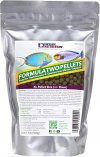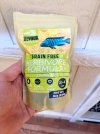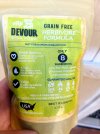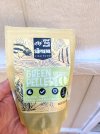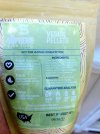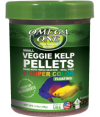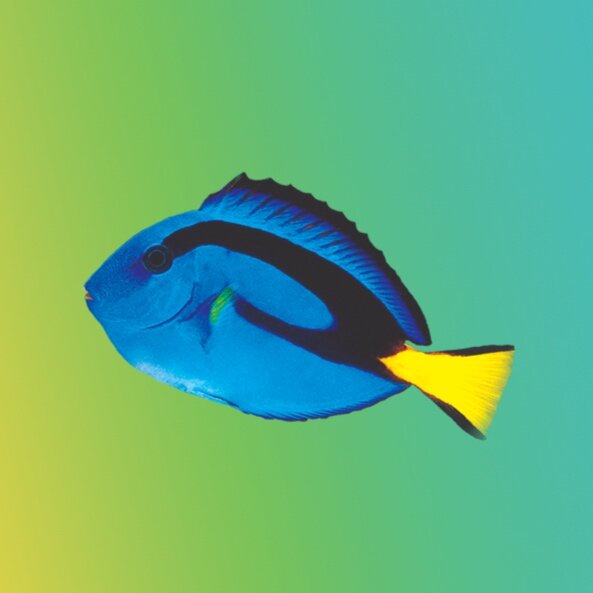I recently started using northfin krill pro and NLS algaemax, I think both are best as meaty pellet and veggie pellet respectively.
Krill pro is 85% krill
Ingredients:
Whole Antarctic Krill Meal (Euphausia Superba), Wheat flour, Organic Kelp (Laminariales), Garlic (Allium Sativum), Spirulina (Dietary Supplement), Astaxanthin, Montmorillonite Clay, Vitamin A Acetate, L-Ascorbyl-2-Polyphosphate, Cholecalciferol, Alpha-tocopherol Acetate, Vitamin B12 Supplement, Riboflavin Supplement, Niacin, Pantothenic Acid, Thiamine, Calcium Pantothenate, Pyridoxine Hydrochloride, Folic Acid, Biotin, Choline Chloride, Cobalt Sulfate, Ferrous Sulfate, Manganese Sulfate, Selenium, Zinc, Rosemary Extract (Rosmarinus Officinalis)
Guaranteed Analysis:
Crude Protein (Min) : 42%
Crude Fat (Min): 5%
Crude Fiber (Max): 5%
Moisture (Max): 9%
Ash (Max): 9%
I like algaemax as it uses 9 types of algae.
Algae: Chlorella Seaweed, Ulva Seaweed, Red Seaweed, Kelp, Spirulina, Wakame Seaweed. Whole Antarctic Krill**, Giant Squid*, Whole Wheat Flour, Eucheuma cottonii Seaweed, Spinosum Seaweed, Chondrus crispus Seaweed, Whole Menhaden Fish*, Omega-3 Fish Oil*, Garlic, Ginger, Astaxanthin, Marigold, Capsanthin, Zeaxanthin, Bentonite Clay, Sea Salt
